Healthcare payers are faced with an overwhelming challenge—the administration of complex medical claims against evolving healthcare regulations. This leaves payers to question if payments made are in alignment with services rendered. Potential overexpenditures significantly impact a healthcare payer’s financial health as well as operational efficiency.
A growing practice is emerging to take on this challenge—payment integrity. Payment integrity is every healthcare payer’s secret weapon to reduce overpayments, optimize financial spending and position for operational efficiency. Through data analysis and pattern recognition, payers can uncover hidden discrepancies in billing and CPT codes, essentially ensuring fair and consistent compensation for healthcare providers.
The Causes and Challenges Associated with Overpayments
Healthcare insurers must be diligent to ensure provider payments are in accordance with contracts and negotiated rates. As overpayments and payment errors occur this leads to an increased potential for substantial financial losses for payers.
Overpayments often stem from various factors, including:
- Billing errors
- Duplicate claims
- Incorrect coding
- Fraudulent activities
However, these overpayments have a far greater impact than simply financial. Overpayments jeopardize member care quality by creating barriers for the organization to make investments in innovative healthcare solutions. Moreover, the payer must find a suitable avenue to recoup losses, typically in the form of increased member premiums. Addressing overpayments is crucial for sustaining a healthy, efficient healthcare ecosystem.
What is Payment Integrity and Why it Matters for Payers
Payment integrity is a critical concept for healthcare payers that includes the processes and systems used to ensure accurate and appropriate reimbursement for medical services. It’s about paying the right amount to the right provider for the right service at the right time. For healthcare payers, mastering payment integrity is essential to maintaining financial health and operational efficiencies.
The Fundamentals of Payment Integrity
At its core, payment integrity involves:
- Verifying claim accuracy
- Detecting and preventing fraud, waste and abuse
- Ensuring compliance with contractual agreements and regulations
- Optimizing payment processes
Focusing on these four fundamentals ensures healthcare payers protect the financial integrity of their business while ensuring the homeostasis of member care quality.
The Impact on Healthcare Payers
Beyond simple cash flow measures, the implementation of robust payment integrity measures offers numerous benefits:
- Cost recovery: By identifying and correcting payment errors, payers can recover millions in overpayments.
- Improved efficiency: Streamlined processes reduce administrative burdens.
- Enhanced provider relationships: Accurate payments lead to fewer disputes and smoother interactions.
- Increased member satisfaction: When costs are controlled, increases in insurance premiums can be kept to a minimum, while care quality can be increased.
Payment integrity is not just a financial safeguard—it’s a strategic imperative for payers seeking to thrive in a competitive market.
Using Data Analytics to Create Processes to Detect Improper Payments
Leveraging advanced data analytics provides a competitive edge for healthcare payers.
The analysis of historical payment patterns uncovers anomalies that may indicate potential overpayments or fraudulent claims. Sophisticated machine generated or calculated algorithms can detect subtle patterns in billing practices that human auditors may miss. For example, payers can identify providers who consistently use higher-paying CPT codes than their peers for similar services.
Using data analytics to implement real-time monitoring systems also allows you to flag suspicious claims before payment is made. Layering predictive analytics allows payers to anticipate future trends in improper billing, allowing the organization to effectively plan and recognize potential inefficiencies.
These proactive approaches help healthcare payers to recognize potential challenges to maintaining the financial integrity of the organization.
Conclusion
As payers begin to think differently about navigating new complexities in healthcare payments, payment integrity cannot be ignored. Leveraging data analytics and advanced technologies, uncovers hidden patterns of inefficiency, potential overpayments and ensures accurate reimbursements.
It’s important to remember that payment integrity is not just about cost savings—it’s about maintaining trust with providers and members alike. A proactive approach continuously allows for process refinement to reduce financial leakage and contribute to a more efficient and transparent healthcare system.
The journey to optimal payment accuracy may be challenging, but the rewards are well worth the effort.




